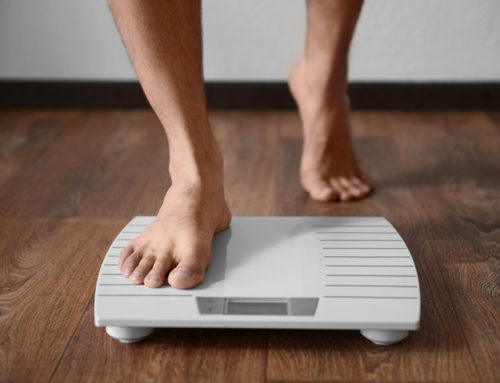FDA APPROVES EXPANDED USE OF LAP-BAND® ADJUSTABLE GASTRIC BANDING SYSTEM FOR OBESE ADULTS
Obese Adults with a BMI of 30-40 with at Least One Obesity Related Comorbid Condition Now Qualify for LAP-BAND® System Procedure When All Other Conservative Weight-loss Therapies Have Failed
(IRVINE, Calif., February 16, 2011) – Allergan, Inc. (NYSE: AGN) today announced the U.S. Food and Drug Administration (FDA) approved the expanded use of the LAP-BAND® System, Allergan’s gastric band, for adults with obesity who have failed more conservative weight reduction alternatives, such as diet and exercise and pharmacotherapy, and have a Body Mass Index (BMI) of 30-40 and at least one obesity related comorbid condition. Currently, approximately 37 million Americans have a BMI of 30-40 and at least one comorbid condition,1,2 underscoring obesity as a growing health epidemic in the United States and the need for additional effective treatment options.
“Given the proven and significant health ramifications of obesity, we are pleased with the FDA’s decision to expand the use of the LAP-BAND® System,” said Frederick Beddingfield, M.D., Allergan’s Vice President of Clinical Research and Development. “Although this label expansion represents a significant advancement in obesity treatment, the LAP-BAND® System is not intended for everyone. The LAP-BAND® System does represent a potential treatment option for those patients with obesity and a related health condition, who have failed more conservative weight-loss therapies, such as diet and exercise and pharmacotherapy, and under consultation with their physician, have determined that weight-loss surgery is the next best treatment option.”
Obesity is the second-leading cause of preventable death in the United States, second only to smoking.3 Given its known correlation to life-threatening comorbid conditions, such as heart disease, stroke, Type 2 diabetes, high blood pressure, sleep apnea and even premature death, obesity is a disease that requires medical treatment. Medical research has found that, if left untreated, those individuals who are currently obese will likely remain obese.4 However, not all weight-loss treatments are effective over the long term – as a preponderance of data, published literature and scientific research have found that diet and exercise is unsuccessful in 80-85% of patients at one year.5,6
“As a surgeon, I see patients every day who have been obese for years and have tried several diet and exercise programs without success,” said Robert Michaelson, M.D., Ph.D., Northwest Surgical Weight Loss Surgery, Everett, Washington, and Clinical Trial Investigator. “These patients frequently feel judged by their weight, as obesity is often viewed as a lack of will power, which it is not. Obesity is a disease, which requires medical treatment, but unfortunately diet and exercise alone do not work for everyone. The LAP-BAND® System meets an unmet clinical need, as it provides an effective treatment option, which is used in combination with diet and exercise, to enable sustained weight loss.”
The approval to expand the use of the LAP-BAND® Adjustable Gastric Banding System is based on a review of full 12-month data and available 24-month data from a prospective, single-arm, non-randomized, multi-center five year-study and the more than 17-year safety and effectiveness record of the LAP-BAND® System. Following approval, the patients in the trial will continue to be followed for a total of five years. In addition, there will be an analysis of the outcomes of patients with BMI of 30 to 40 recorded in the Bariatric Outcomes Longitudinal DatabaseSM (BOLDSM). Established in 2007 by the Surgical Review Corporation, BOLD is now the world’s largest and most comprehensive repository of clinical bariatric surgery patient information. The database currently contains more than 300,000 patients and 12,000 new patients are added monthly. The BOLD analysis will consist of examining the explant rates, adverse events, weight loss, and changes in the status of obesity related comorbid conditions observed in LAP-BAND® System patients over the course of 10 years.
About the LBMI-001 Clinical Study
The LAP-BAND® System study, initiated by Allergan, Inc., is a prospective, single-arm, non- randomized, multi-center five year-study conducted under an FDA-approved Investigational Device Exemption (IDE G070039; registered at www.clinicaltrials.gov, registration
# NCT00570505). The study was conducted to determine the safety and effectiveness of the LAP-BAND® System as a treatment for obesity in adult patients with a BMI of ≥ 30 and < 40, with and without comorbid conditions. The study was initiated in 2007, and included 149 patients, who had a mean excess weight of 62.8 lbs and had been obese on average for 17 years and who underwent the LAP-BAND® System procedure.
The criterion for success was at least 40% of patients achieving clinically meaningful weight loss at the 12-month timepoint, where clinically meaningful weight loss was defined as at least 30% Excess Weight Loss (EWL). Percent excess weight loss (%EWL) is defined as the percent of “excess weight” – i.e., the weight above ideal weight – that is lost. Results from the 12-month dataset demonstrate clinically significant weight loss in this patient group with a low risk of serious complications. Specifically, 83.9% of the patients lost at least 30% of their excess weight at the one-year timepoint, more than twice the percentage required for success. More
than 65% of the patients in the trial were no longer obese after one year. Weight loss was maintained in the second year of the study. This level of weight loss exceeds what is typically seen with more conservative treatment, such as diet and exercise.
The secondary endpoints for the trial were improvement in obesity related comorbid conditions of dyslipidemia, Type 2 diabetes, and hypertension and improvement in Quality of Life (QoL). Eighty five percent of subjects in the trial had at least one comorbid condition. In terms of improvement in comorbid conditions of dyslipidemia, Type 2 diabetes, and hypertension, 22- 33% of patients with those conditions, saw their conditions resolved after one year. In addition, approximately 60% of patients, who had a comorbidity at baseline, had improvement of at least one comorbid condition by month 12. Also, there was a statistically significant improvement in QoL at months six and 12.
During the 12-month study period, the types of Adverse Events (AEs) reported by patients were as expected for the surgical procedure, such as vomiting, dysphagia, and gastroesophageal reflux disease (GERD). Most AEs were mild to moderate in severity and resolved in less than four weeks.
About the LAP-BAND® System
The LAP-BAND® System was originally approved by the FDA in 2001 for use in severely obese adults, individuals with a BMI of 35 with at least one severe comorbid condition or a BMI of 40, or those who are at least 100 pounds or more overweight. In addition, the LAP-BAND® System has been approved internationally since 1993. The LAP-BAND® System is now the first and only FDA-approved device for bariatric surgery in patients with a BMI of 30-35. Over the past 18 years, more than 650,000 procedures have been performed, leading to over two million patient years of exposure for the device.
Important LAP-BAND® Safety Information
Indications: The LAP-BAND® System is indicated for weight reduction for patients with obesity, with a Body Mass Index (BMI) of at least 40 kg/m2 or a BMI of at least 30 kg/m2 with one or more obesity related comorbid conditions.
It is indicated for use in adult patients who have failed more conservative weight reduction alternatives, such as supervised diet, exercise and behavior modification programs. Patients who elect to have this surgery must make the commitment to accept significant changes in their eating habits for the rest of their lives.
Contraindications: The LAP-BAND® System is not recommended for non-adult patients, patients with conditions that may make them poor surgical candidates or increase the risk of poor results (e.g., inflammatory or cardiopulmonary diseases, GI conditions, symptoms or family history of autoimmune disease, cirrhosis) who are unwilling or unable to comply with the
required dietary restrictions, who have alcohol or drug addictions or who currently are or may be pregnant.
Warnings: The LAP-BAND® System is a long-term implant. Explant and replacement surgery may be required. Patients who become pregnant or severely ill, or who require more extensive nutrition, may require deflation of their bands. Anti-inflammatory agents, such as aspirin, should be used with caution and may contribute to an increased risk of band erosion.
Adverse Events: Placement of the LAP-BAND® System is major surgery and, as with any surgery, death can occur. Possible complications include the risks associated with the medications and methods used during surgery, the risks associated with any surgical procedure and the patient’s ability to tolerate a foreign object implanted in the body.
Band slippage, erosion and deflation, reflux, obstruction of the stomach, dilation of the esophagus, infection or nausea and vomiting may occur. Reoperation may be required.
Rapid weight loss may result in complications that may require additional surgery. Deflation of the band may alleviate excessively rapid weight loss or esophageal dilation.
Important: For full safety information, please visit www.lapband.com, talk with your doctor or call Allergan Product Support at 1-800-624-4261.
CAUTION: Rx only.
Forward-Looking Statements
This press release contains “forward-looking statements,” including, but not limited to, the statements by Dr. Beddingfield and Dr. Michaelson, and other statements regarding the safety, effectiveness, adverse reactions, product availability and market potential of the LAP-BAND® System. These statements are based on current expectations of future events. If underlying assumptions prove inaccurate or unknown risks or uncertainties materialize, actual results could vary materially from Allergan’s expectations and projections. Risks and uncertainties include, among other things, general industry and medical device market conditions; technological advances and patents attained by competitors; challenges inherent in the research and development and regulatory processes; challenges related to product marketing, such as the unpredictability of market acceptance for new products and/or the acceptance of new indications for such products; inconsistency of treatment results among patients; potential difficulties in manufacturing; general economic conditions; and governmental laws and regulations affecting domestic and foreign operations. Allergan expressly disclaims any intent or obligation to update these forward-looking statements except as required by law. Additional information concerning these and other risk factors can be found in Allergan’s public periodic
filings with the Securities and Exchange Commission, including the discussion under the heading “Risk Factors” in Allergan’s 2009 Form 10-K and subsequent Quarterly Reports on Form 10-Q. Additional information about Allergan is available on the World Wide Web at www.Allergan.com or you can contact the Allergan Investor Relations department by calling (714) 246-4636.
About Allergan, Inc.
Allergan is a multi-specialty health care company established more than 60 years ago with a commitment to uncover the best of science and develop and deliver innovative and meaningful treatments to help people reach their life’s potential. Today, we have more than 9,000 highly dedicated and talented employees, global marketing and sales capabilities with a presence in more than 100 countries, a rich and ever-evolving portfolio of pharmaceuticals, biologics, medical devices and over-the-counter consumer products, and state-of-the-art resources in R&D, manufacturing and safety surveillance that help millions of patients see more clearly, move more freely and express themselves more fully. From our beginnings as an eye care company to our focus today on several medical specialties, including ophthalmology, neurosciences, medical aesthetics, medical dermatology, breast aesthetics, obesity intervention and urologics, Allergan is proud to celebrate 60 years of medical advances and proud to support the patients and physicians who rely on our products and the employees and communities in which we live and work.
Allergan Contacts:
Jim Hindman (714) 246-4636 (investors) Joann Bradley (714) 246-4766 (investors) David Nakasone (714) 246- 6376 (investors) Caroline Van Hove (714) 246-5134 (media) Cathy Taylor (714) 246-5551 (media)
###
© 2011 Allergan, Inc. Irvine, CA 92612. ® marks owned by Allergan, Inc. All rights reserved.
1 Flegal KM, Carroll MD, Ogden CL, Curtin LR. Prevalence and Trends in Obesity Among US Adults, 1999-2008. JAMA: The Journal of the American Medical Association 2010;303:235-41.
2 2009 CDC Behavioral Risk Factor Surveillance System (BRFSS) annual data.
3 Jia H, Lubetkin E. Trends in quality-adjusted life-years lost contributed by smoking and obesity. Am J Prev Med 2010;38:138-44.
4 Kuczmarski MD, Prevelance of Overweight and Weight Gain in the United States. Am J Clin Nutr 1992; 55:495S- 502S.
5 Kraschnewski, JL et al. Long-term weight loss maintenance in the United States. International Journal of Obesity 2010; 1-11







Leave A Comment